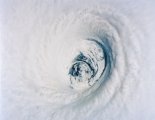
Worksheets and No Prep Teaching Resources
Reading Comprehension Worksheets
 Worksheets and No Prep Teaching Resources Reading Comprehension Worksheets |
|
| edHelper's suggested reading level: | grades 4 to 6 | |
| Flesch-Kincaid grade level: | 5.37 |
|
Inside the Hurricane
By Trista L. Pollard |

|
 1 When you look outside your window, you should not see a hurricane. Hurricanes only form under certain conditions. This means it takes special "ingredients" before a hurricane is born.
1 When you look outside your window, you should not see a hurricane. Hurricanes only form under certain conditions. This means it takes special "ingredients" before a hurricane is born. |
Create Weekly Reading Books
Prepare for an entire week at once! |
| Leave your feedback on Inside the Hurricane (use this link if you found an error in the story) |